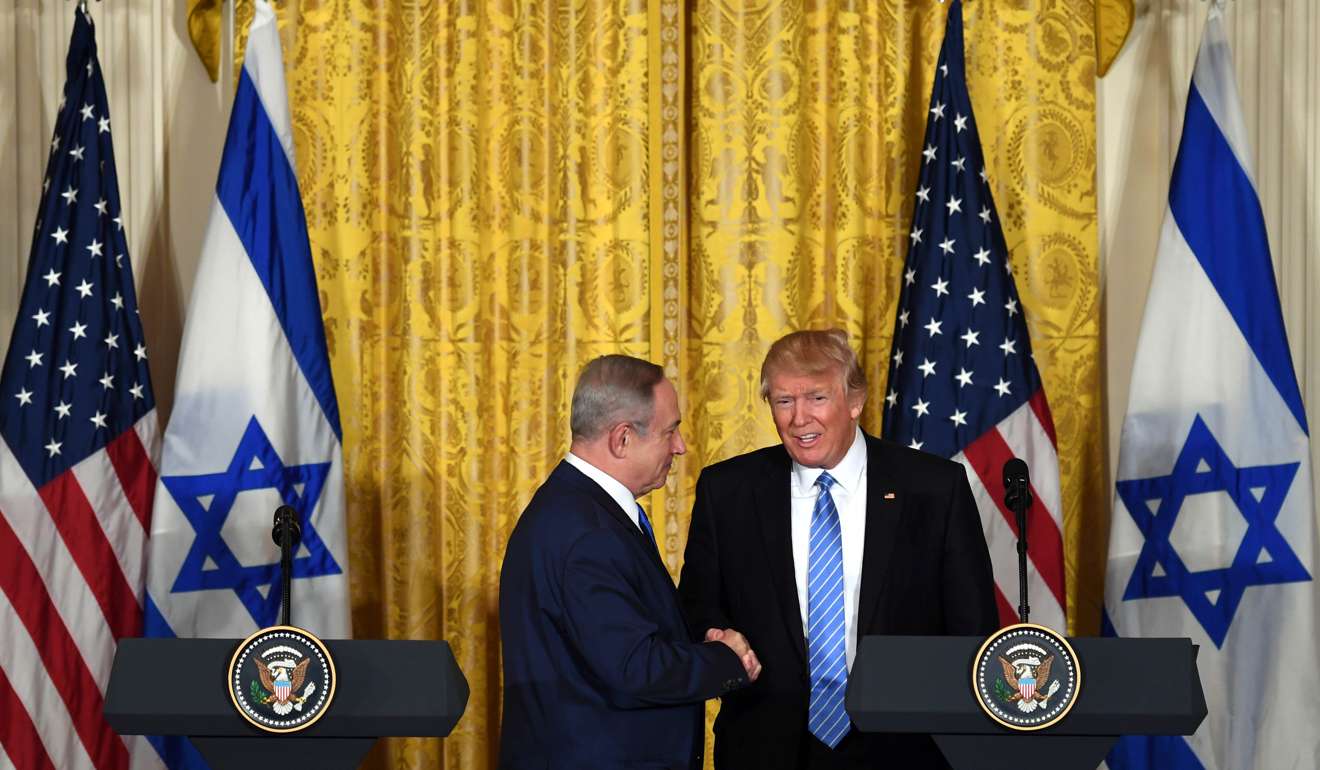
What is the two-state solution and why is Donald Trump seeking a different path to Mideast peace?
The idea of a Palestinian state existing alongside Israel has been the basis of decades of international efforts to end the conflict.
But new US President Donald Trump has said he is not wedded to the so-called two-state solution. Here is the history of the plan, and the possible alternatives.
What is the two-state solution?
The two-state solution envisions independent Israeli and Palestinian states coexisting side by side peacefully.
This means creating a Palestinian state on the rough basis of the situation before 1967, when Israel occupied east Jerusalem and the West Bank in a war with its Arab neighbours.
The so-called Green Line demarcates the West Bank, Gaza Strip and east Jerusalem, which the Palestinians see as their capital.
What is the history of the plan?
In 1988, then Palestinian leader Yasser Arafat unveiled a declaration of independence which for the first time talked of two states.

Islamic Jihad and Hamas, which runs Gaza, are not included and do not recognise Israel.
The UN partition plan from 1947 also proposed two states, one Arab and one Jewish, with Jerusalem placed under separate international control. The Jewish leaders accepted it but Arab leaders did not.
The 1993 Oslo Accords between the two sides agreed on the creation of the Palestinian Authority for a transitional five-year period ahead of full independence.
The process, however, broke down amid mutual accusations of blame.
In 2003 another roadmap envisaged a final agreement on borders for 2005 but also failed.
Who backs the two-state plan now?
Senior Palestinian official Hanan Ashrawi says there is “a global consensus” that the two-state solution is the best route to peace.
The United Nations, at which the State of Palestine has observer status, has endorsed it, as has the European Union.
The 2012 Arab Peace Initiative, which calls for the creation of a Palestinian state in exchange for recognition of Israel by Arab States, is also based on two states.
In December 2016, outgoing US Secretary of State John Kerry said that it was the only way to lasting peace.
US and Israel change their stances
Since his inauguration Trump has signalled a different approach, and on Tuesday a White House official said Washington would not seek to dictate the terms of any eventual peace settlement. Trump restated that on Wednesday.
The comments, which were seen as a break from support for the two-state solution, sparked condemnation from the Palestinians.
In 2009, Israeli Prime Minister Benjamin Netanyahu delivered a speech for the first time publicly endorsing the idea of a Palestinian state coexisting with Israel.
Six years later, however, he said during an election campaign that he would not allow an independent Palestinian state.
Today he heads the most rightwing government in Israel’s history, dominated by ultra-nationalists and supporters of annexation of the West Bank.
He says the Palestinians must recognise Israel as a “Jewish” state, which the Palestinian leadership refuses to do.
A single binational state?
According to recent polls, support for the two-state solution is falling among Palestinians and Israelis.
In September a survey showed that half of all Palestinians and 41 per cent of Israelis were against the idea.
Another poll in December found only 31 per cent of Palestinians saw the two-state solution as viable.
Some, mostly in Israel, argue for a single, binational state, where Palestinians and Israelis would be equal under law.
But this option leaves open demographic concerns as Israelis worry about preserving their country’s Jewish character.

.png?itok=arIb17P0)